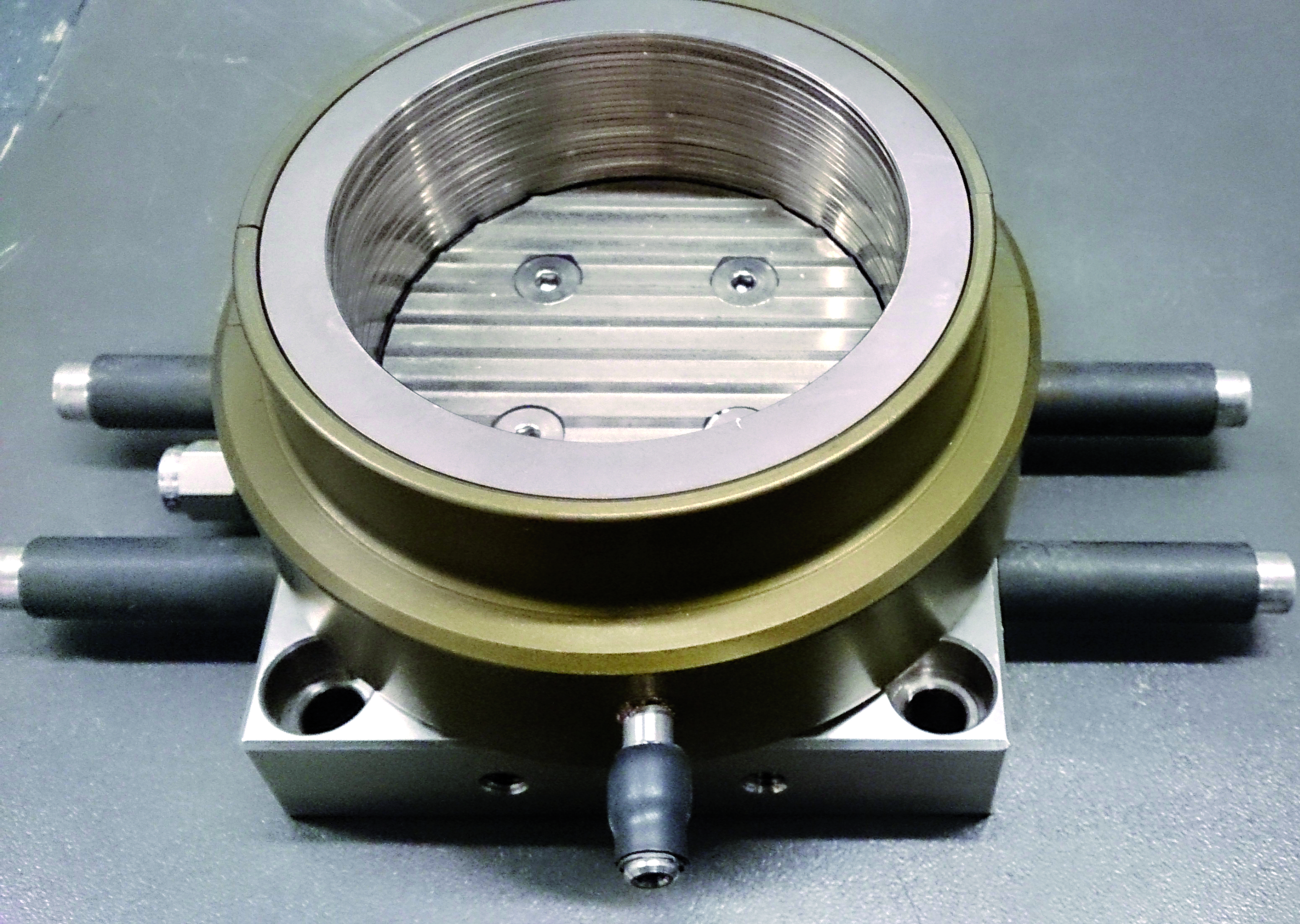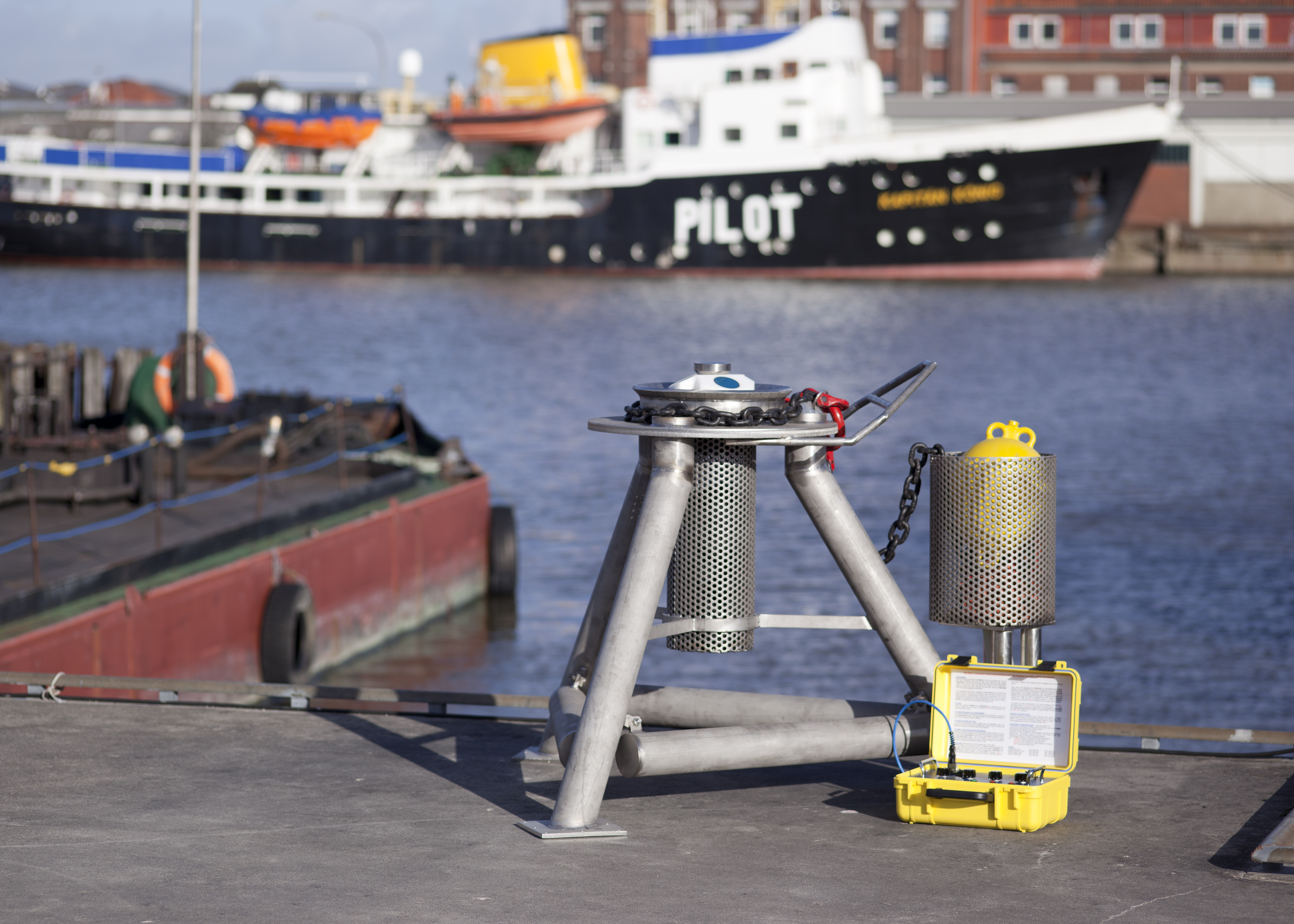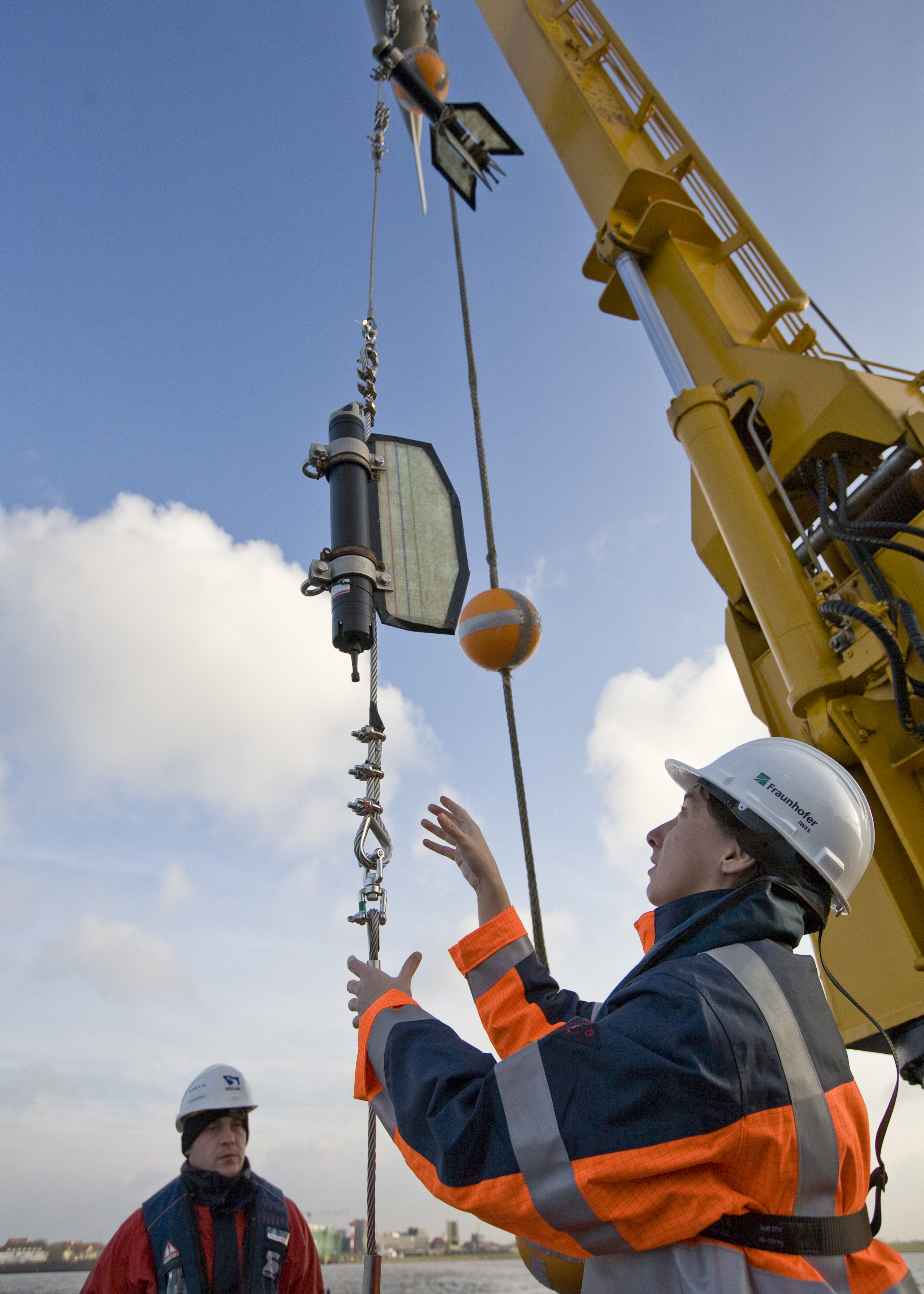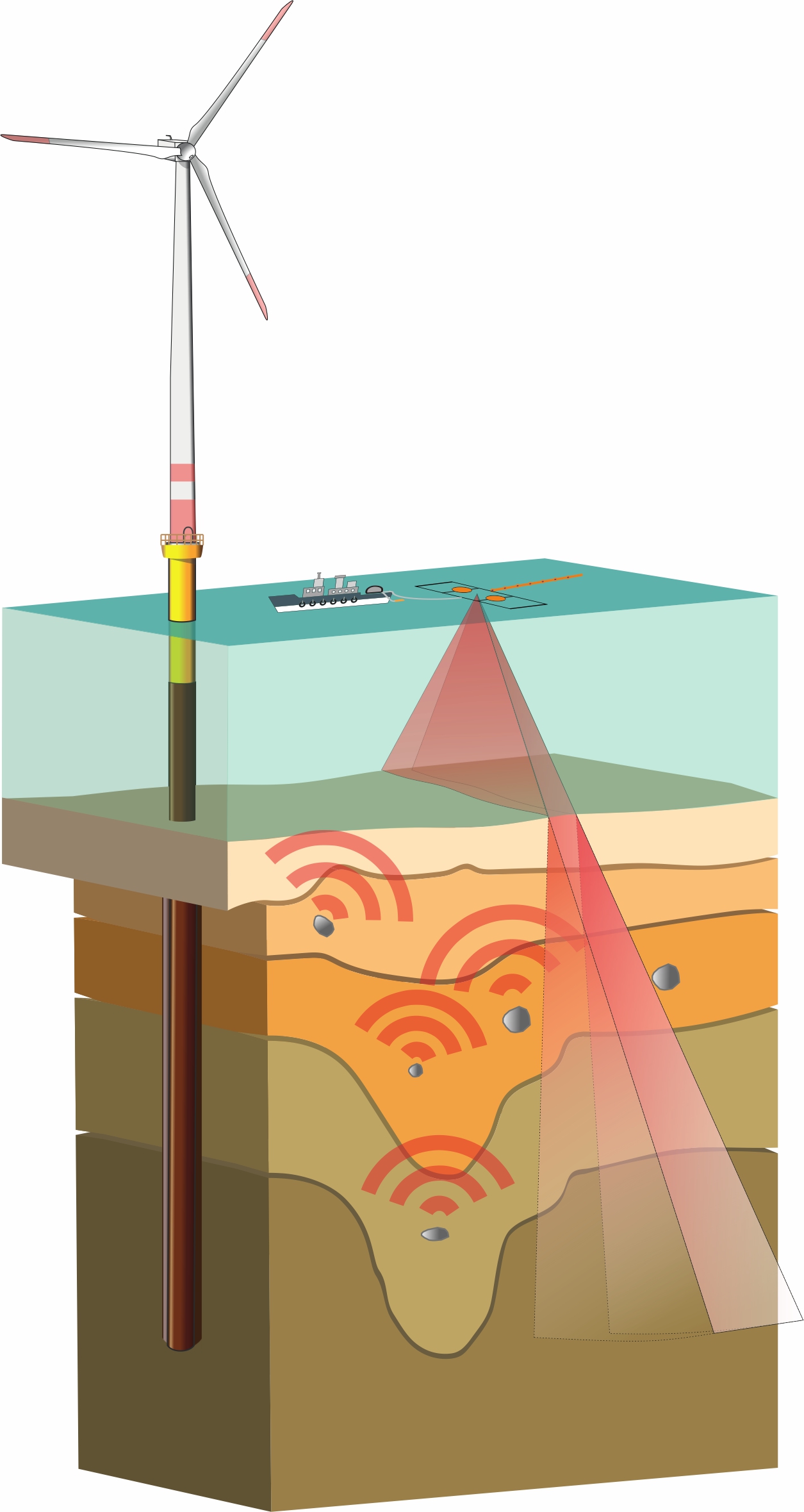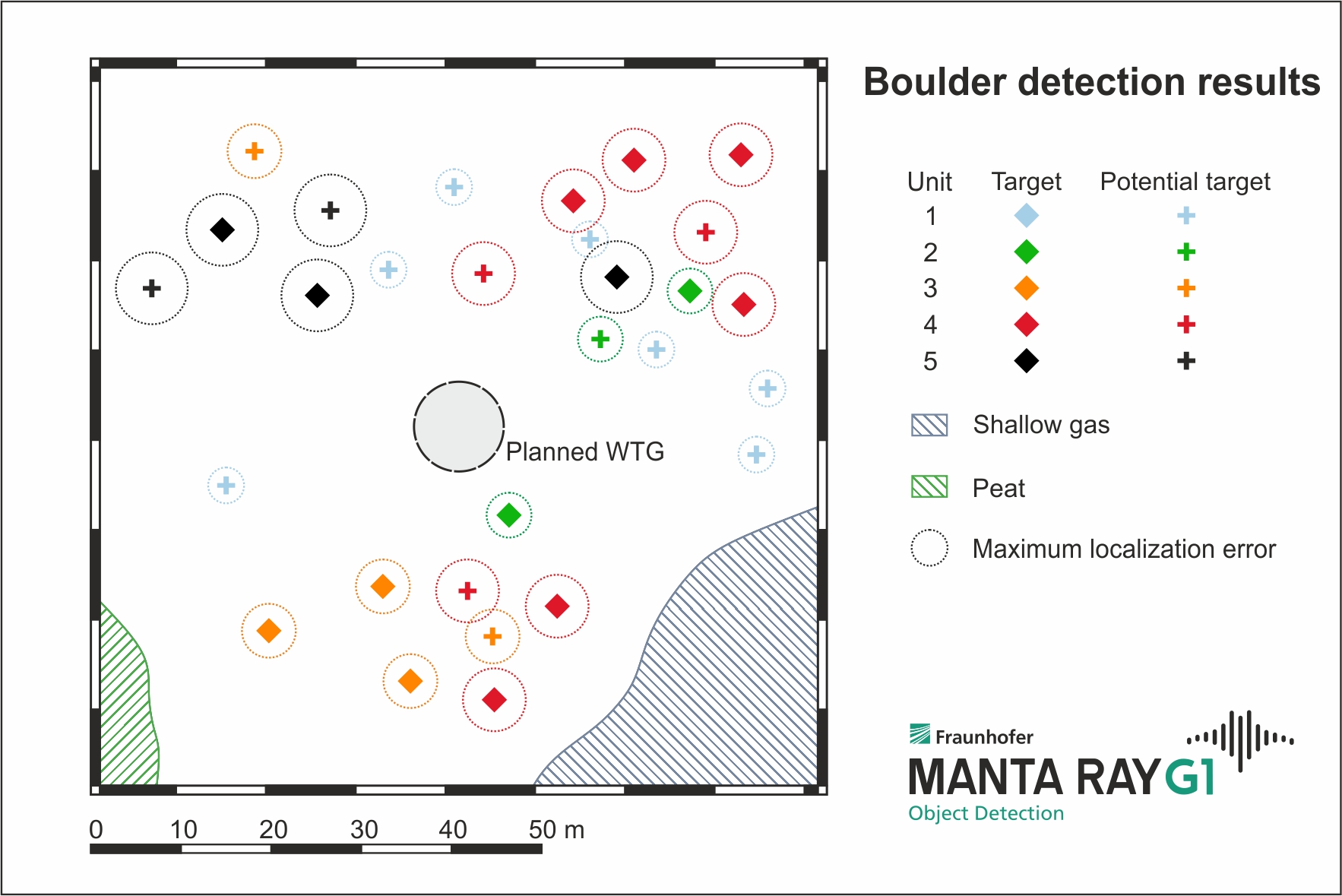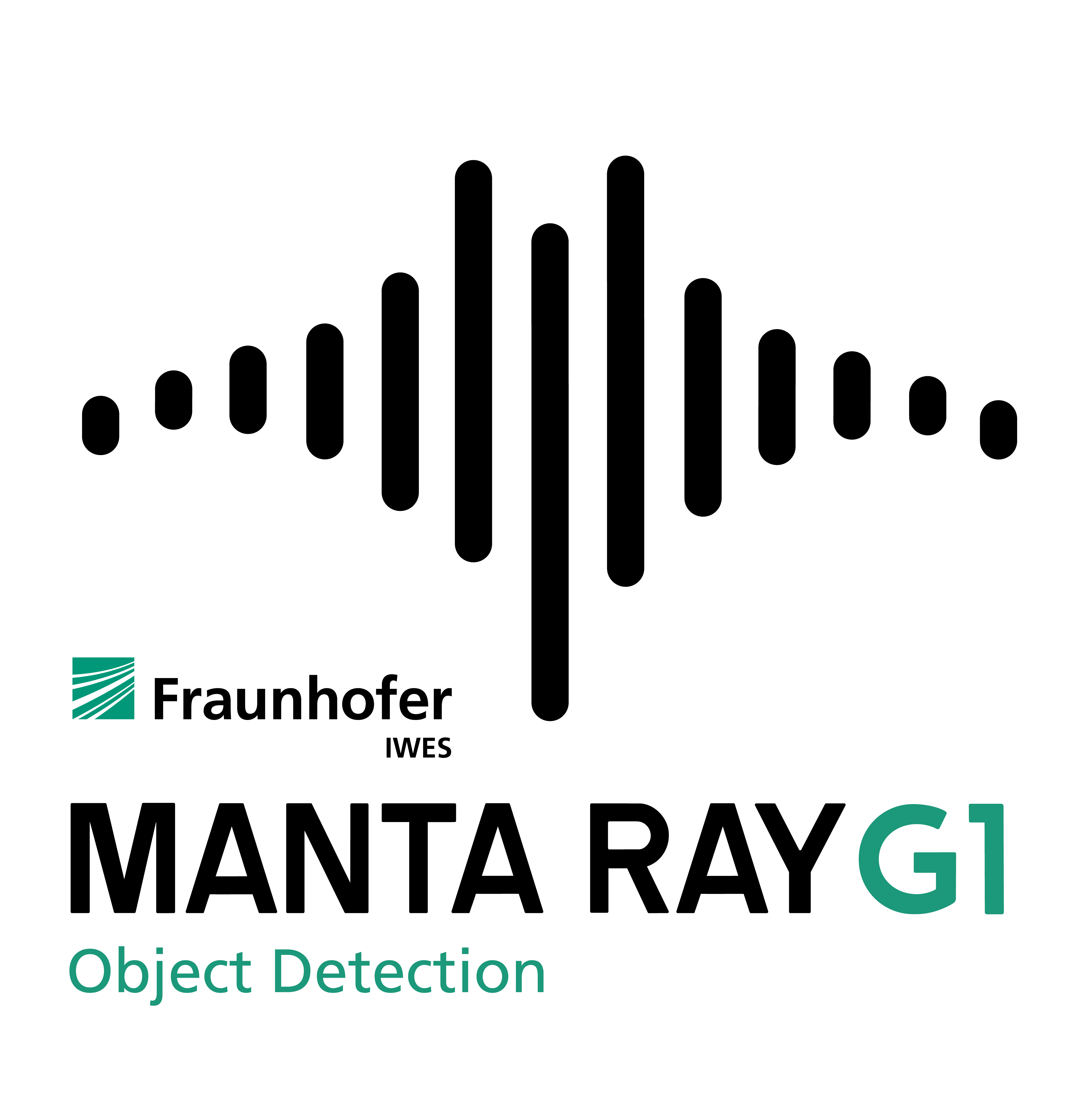The new Fraunhofer IWES Manta Ray system – cost-efficient seismic diffraction imaging for sub-seafloor boulder de-risking of offshore construction sites
Glacial boulders present serious challenges for offshore wind farm installation
The scale of offshore wind turbine generator (WTG) foundations and offshore environmental conditions, pose serious challenges for the construction of offshore wind farms. Especially glacially influenced regions, e.g. in northern Europe, show difficult geological conditions for the installation of monopiles or other foundation types. The identification of widespread boulder-prone glacial sediments in the shallow sub-seafloor is a common challenge for pre-site surveys in these areas. Such boulders show sizes of <1 m to >5 m and may occur in various geological units. Boulders may also occur on non-glaciated margins, e.g. in conglomerate layers, volcanic deposits or subsiding beach rocks, which pose similar challenges for the installation of offshore infrastructure.
Encountering boulders during pile installation may lead to damage of the foundation or to a complete refusal of the pile installation process, incurring considerable remediation costs. Associated stand-by costs for ships and replacement piles further increase the expenses to mitigate boulder-related installation issues.
Conventional geophysical methods including sub-bottom profilers, single-channel seismics and magnetic measurements cannot reliably detect and localize sub-seafloor boulders. Thus, even extensive state-of-the-art geophysical site surveys leave a considerable remnant risk of undetected boulder occurrences that could obstruct foundation installation and lead to an increase in costs and delays in wind farm development.
In order to address this technological gap, Fraunhofer IWES, jointly with the University of Bremen, developed the Manta Ray system, a new geophysical tool for offshore sub-seafloor boulder surveys.
The Fraunhofer IWES Manta Ray system
The novel Manta Ray data acquisition system in conjunction with a highly specialized data processing procedure is capable of reliably detecting objects, i.e. boulders, within the marine sediments to full WTG foundation depth. It is based on multichannel seismic principles using a custom-designed array of hydrophones for signal recording and an appropriate high-frequency seismic signal source. While conventional seismic methods commonly image sub-surface structures utilizing reflected energy, the Manta Ray system images diffracted energy, which is caused by individual objects in the sub-surface. Objects are reliably detected down to a depth of ~100 m below the seafloor in shallow water areas of the North and Baltic Seas.
Simultaneously to the acquisition of seismic diffraction data, the Manta Ray is capable of acquiring ultra-high-resolution (UHR) 2D seismic reflection data, used for a detailed geological interpretation of the survey area. The combination of high-precision positioning systems, a custom-designed survey strategy and an effective data processing routine, based on proprietary algorithms, results in a high-resolution seismic diffraction and UHR seismic reflection dataset for subsequent interpretation. The versatile interpretation workflow integrates the statistical analysis of seismic diffraction data and a stratigraphic interpretation of geological units from the seismic reflection data. The results comprise the locations and burial depths of identified objects including localization error estimates and a geological interpretation of identified objects within their respective sedimentary units. These results can be used to avoid areas of high boulder risk via micro-siting of foundations.
The Manta Ray system has been employed in a number of sea trials in the German North Sea and Baltic Sea sectors in order to validate the method. Subsequently, a first commercial application could be carried out successfully in 2019.
Typical survey work using the Manta Ray targets limited areas around planned WTG locations (e.g. 100 x 100 m), requiring between 6 and 12 hours survey time, depending on overall survey layout, vessel mobilization and other campaign constraints. Full field surveys are possible due to high survey speed of up to 5 knots and swath imaging capabilities of the Manta Ray. Data processing and interpretation is carried out in close cooperation with the client to ensure result-oriented work and individually designed deliverables. Processing times are on the order of several weeks, owing to sophisticated data processing procedures and careful interpretation of results. The final results allow the client to ensure the safe, time- and cost-efficient construction of offshore infrastructure through the de-risking of construction sites with regard to boulder occurrence. The system can easily be adjusted to the sizes of boulders that are of interest for individual projects as well as the depth below seafloor that is targeted.
The Manta Ray system allows a boulder risk-assessment and –mitigation for offshore construction projects such as:
- WTG installations
- Offshore station foundations
- Cable corridors
- Dredging operations
Benefits of the Manta Ray system for boulder surveys:
- Reliable sub-seafloor object detection through point diffraction imaging
- Detection of objects (0.5-5 m) within sediments down to ~100 mbsf
- Efficient surveying with swath coverage
- High localization accuracy due to synthetic aperture processing
- Fit-for-purpose risk assessment for offshore construction projects
- Secondary UHR 2D/3D seismic site survey dataset
Data sheet "Manta Ray G1 - Sub-seafloor object detection"

